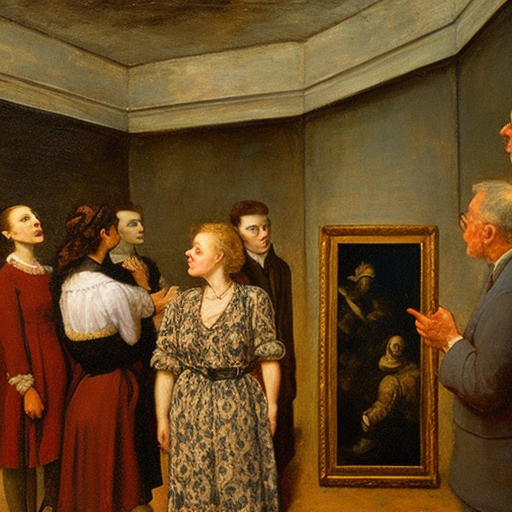Summary: Art collectors are individuals or institutions who acquire and possess artworks for personal enjoyment, investment, or public display. They play a crucial role in the art market, shaping trends, supporting artists, and preserving cultural heritage. Art collectors can be categorized into different types based on their motivations, preferences, and level of expertise.
Introduction
Art collectors are individuals or institutions who acquire and possess artworks for various reasons. They are an essential part of the art ecosystem, driving the art market, supporting artists, and contributing to the preservation of cultural heritage. Art collectors can range from passionate enthusiasts to seasoned experts, and their collections can vary in size, scope, and focus.
Types of Art Collectors
Art collectors can be categorized into different types based on their motivations, preferences, and level of expertise. Some common types include:
Patrons: These collectors are driven by a passion for art and a desire to support artists. They often develop close relationships with artists, commissioning new works and providing financial support. Patrons may also establish foundations or museums to showcase their collections and promote the arts.
Investors: These collectors view art as an investment and seek to acquire artworks that have the potential to appreciate in value. They carefully research the market, consult experts, and make strategic purchases. Investors may focus on emerging artists or specific genres that are expected to gain popularity.
Connoisseurs: These collectors have a deep knowledge and appreciation for art. They study art history, attend exhibitions, and engage in scholarly discussions. Connoisseurs often seek out rare and historically significant artworks, valuing quality, craftsmanship, and provenance.
Curators: These collectors are often affiliated with museums or galleries and acquire artworks for public display. They carefully select pieces that align with their institution’s mission and exhibition programs. Curators play a vital role in shaping public taste and preserving cultural heritage.
Amateurs: These collectors are driven by personal enjoyment and often acquire artworks for their own homes or private spaces. They may have diverse tastes and collect artworks based on personal preferences rather than market trends or investment potential.
Role of Art Collectors
Art collectors play a crucial role in the art market and the broader cultural landscape. Their activities have a significant impact on artists, galleries, museums, and the public. Some key roles of art collectors include:
Supporting Artists: By acquiring artworks, collectors provide financial support to artists, enabling them to continue their creative practice. Collectors may also commission new works, offer residencies, or provide grants to emerging artists.
Shaping Trends: Collectors have the power to influence the art market and shape trends. When a collector acquires a particular artist’s work, it can increase the artist’s visibility and demand, leading to higher prices and increased recognition.
Preserving Cultural Heritage: Many collectors are passionate about preserving cultural heritage and acquire artworks that represent important historical periods or artistic movements. They may loan their collections to museums or establish foundations to ensure the long-term preservation and accessibility of their artworks.
Educating the Public: Collectors often share their collections with the public through exhibitions, loans to museums, or private viewings. These opportunities allow the public to engage with artworks they may not have access to otherwise, fostering cultural appreciation and understanding.
Conclusion
Art collectors are diverse and multifaceted individuals who contribute significantly to the art world. Their motivations, preferences, and expertise shape the art market, support artists, preserve cultural heritage, and educate the public. Whether they are passionate patrons, astute investors, knowledgeable connoisseurs, or dedicated curators, art collectors play a vital role in the creation, dissemination, and preservation of art.












